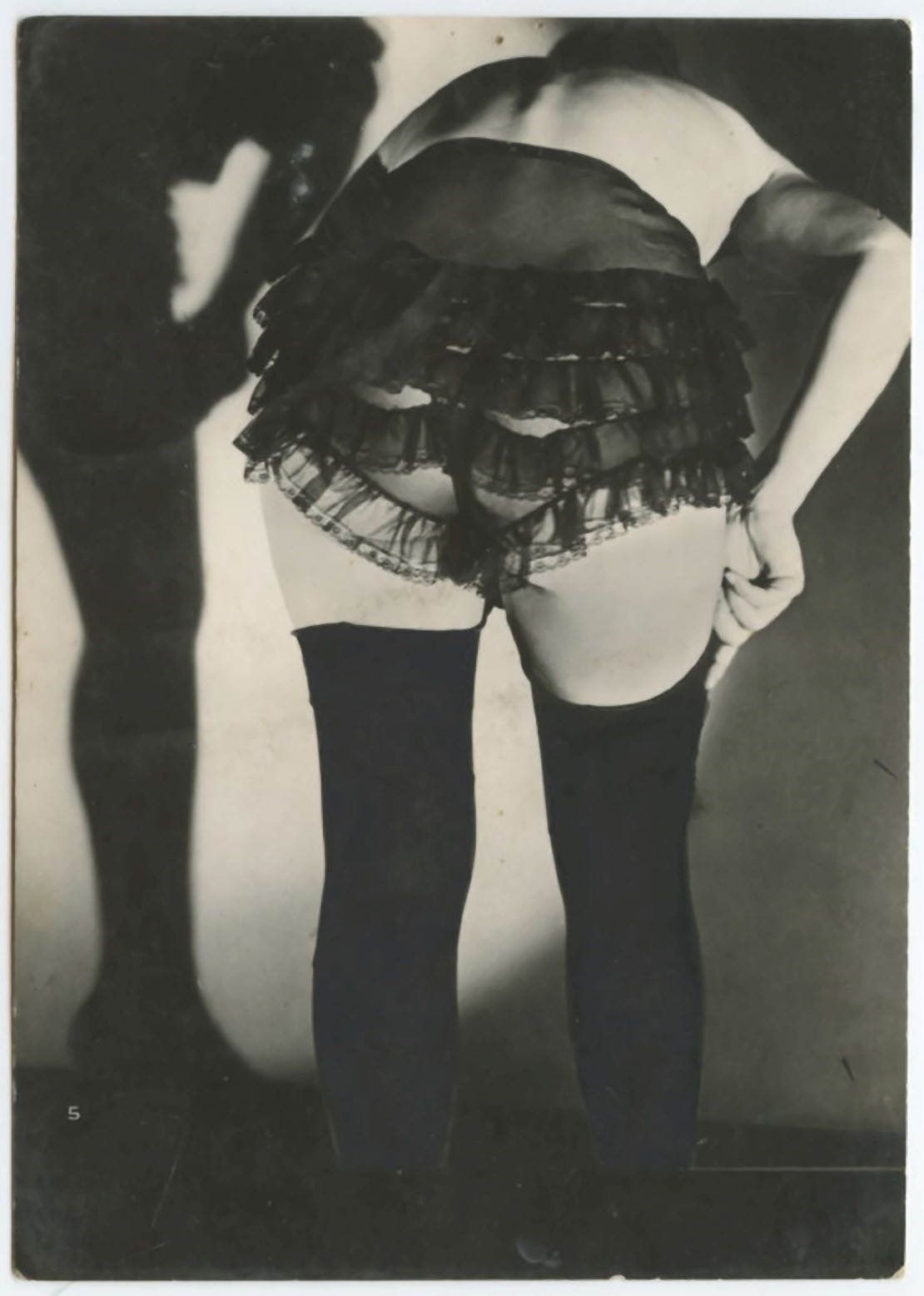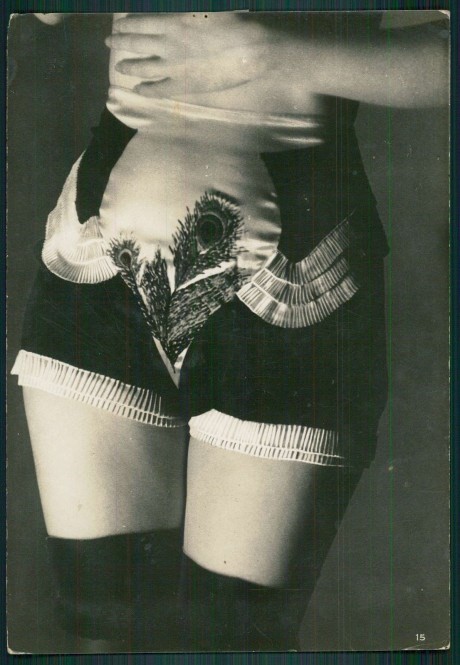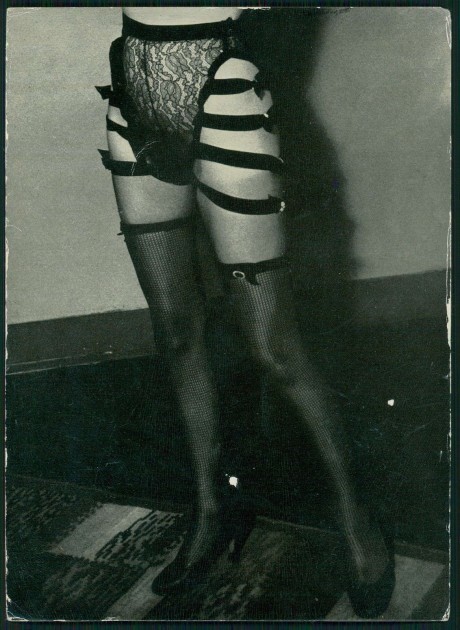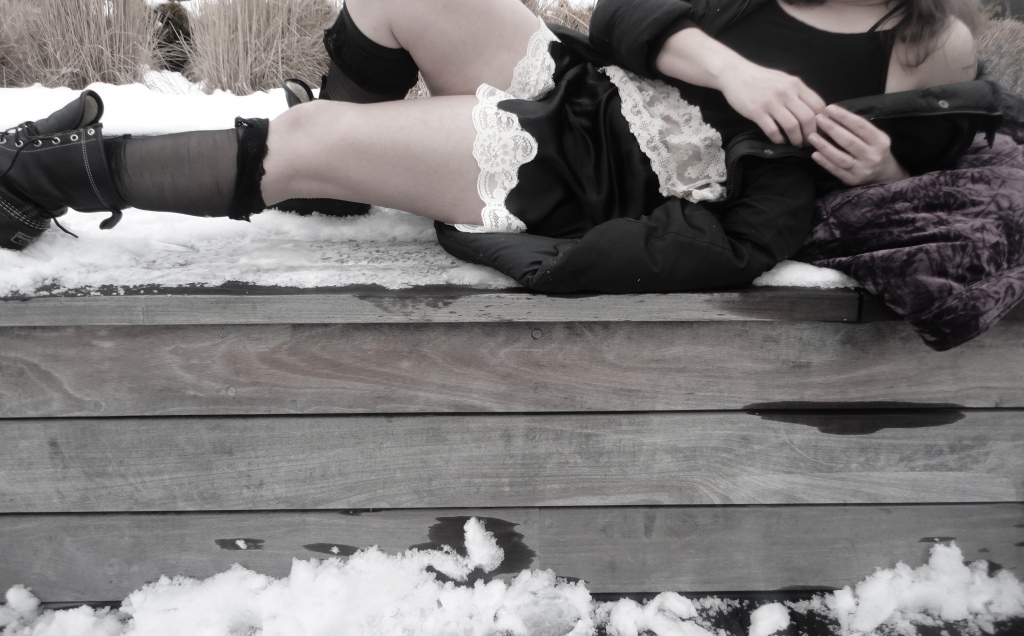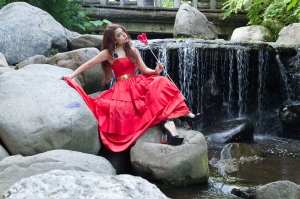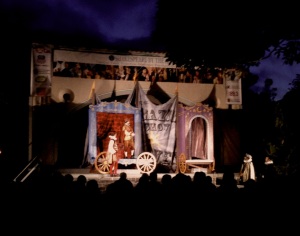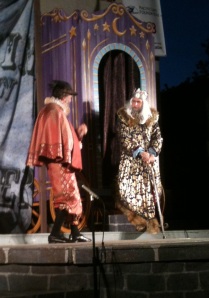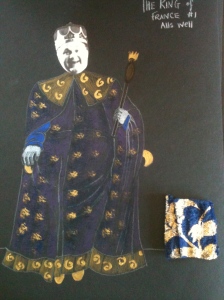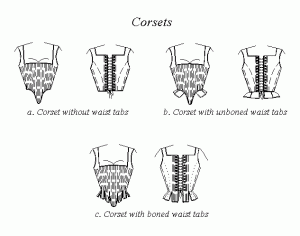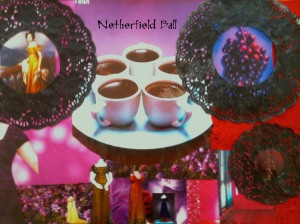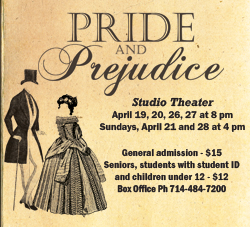So every costume shop has it’s own particular names for certain fabrics, ‘satin from hell’ being one of my favorites to describe poly-satin, after an amazing/awful film called ‘The God of Cookery’ I got introduced in my first year as a costumer (thankyou Katrina). And now I’ve added to that list. ‘Snail snot’ is iridescent crystal organza.
But it also made me realize that a fabric guide might be a useful thing- especially as I am learning so many more of them while being sent out onto the streets of New York to buy, say 5 yards of gazaar. What’s gazaar?? See I knew this list would come in useful.
I’ve tried to group them in sections that are similar to each other, but for an alphabetical list, see here:
Brocade: A shuttle woven fabric, woven on a loom, with supplementary weft technique, meaning in additional to the structural weft and warp there is a non structural weft as well to give the appearance that the weave is embroidered on. The supplementary weft can often be seen flaring on the backside/ wrong side of the fabric.
Jacquard: A fabric where pattern is woven directly into the fabric, named after the creator of the machine that made it, Joseph Marie Jacquard, who invented it in 1801- 1810. The Jacquard mechanism is attached to a loom and operated by a punched card system with selects individual warp threads. A variety of machines exist which exert control over 100,200, 400 or 600 card ends.*
Matelasse: A slightly spongy matte fabric, coming from the french word meaning ” quilted, padded or cushioned”, although there is no actual padding i the fabric, it is patterned in relief, looking like it is embossed.
Damask: A reversible figured fabric of silk, wool, or synthetic fibers, with a pattern formed by weaving. The name comes from the city of Damascus, a large production in the early middle ages as it was on the silk road. They are woven using one warp yarn and one weft yarn, usually with the pattern in the warp-faced satin weave and the ground in the weft-faced or sateen weave.
Faille: A heavier weight fabric with a slight sheen, generally made of silk, polyester or rayon, known for its horizontal ribbed texture.
Bengaline: A lighter weight fabric with a horizontal rib and a slight sheen. Traditionally it was made of a mix of silk and cotton- with the weft being cotton and the warp being silk. It was often used as a cheaper alternative to silk, as it still had the sheen of silk. The name comes from Bengal, in India. It has slightly wider ribs than faille, but not as wide as Ottoman.
Ottoman: a heavy weight fabric resembling faille, except with wider, rounder ribs than run the width of the fabric, can be made of silk, polyester or rayon. Traditionally it was made of a mix of silk and cotton- with the silk as the warp and cotton as the weft.
Gazaar/Gazar: a silk or wool plain weave fabric made with high twist double yarns woven a one, resulting in a twill like effect. It has a crisp hand and smooth texture. You can also get metallic versions, which are heavier than a Lame, and have the same twill like quality.
Twill: A medium to heavy weight fabric with a slight ribbed texture diagonally across the fabric. Can be made of silk, polyester, cotton.
Gabardine: A light weight wool, known for its twill texture on one side.
Charmeuse: A very fine satin, shiny on one side, matte crepe on the other, with a very fine hand. Generally made of silk, or polyester, and can also be found in 2 or 4 way stretch varieties.
Satin: Silk or Polyester that is shiny on one side, and matte on the other. This has a stiffer hand than crepe backed satin.
Duchess Satin: The heaviest and most luxurious weigh of satin. This can be single or double faced- shiny on one or both sides. Generally made of silk or polyester.
Sateen: A cotton or polyester fabric that has a sheen on one side.
Satin backed crepe: A heavier weight than charmeuse, and slightly more spongey, with a good hand. Generally made of silk, or polyester.
Habutai: Habutai and China Silk (Crepe de Chine) are both incredibly lightweight matte silk. Habutai often comes in basic white, cream and China Silk is often dyed.
Crepe: A matte spongey fabric made of silk, polyester or rayon, with a nice hand.
Noil: Silk Noil or Raw Silk is nubby with a slight sheen. It is woven from very short fibres, called silk boils, and has slums and irregulars in the weaving adding to its texture. It has a softer hand than Matka, which is slightly stiffer.
Duppioni: A fine quality fabric, woven of silk, although polyester imitations are now available. The quality ranges from finely woven smooth fabric, to a slightly thicker more nubby fabric, often depending on where the silk is woven. Dupponi is also often woven with different color weft and warp threads. In the UK it is called Dupion. Shantung is a type of Dupponi woven in China, it is also woven in Italy.
Matka: beautifully and often intensely dyed woven silk, generally with a handwoven quality. Matka is an Indian term for rough hand loom silk woven out of very thick yarns spun out of pierced cocoon in the weft and organzine in the warp. It’s woven from the short ends of Mulberry silkworms and spun from hand without removing the gum, leaving slubs and irregularities, which add to the texture.*
Milleskin: Lighter weight spandex in shiny of matte options
Moleskin: Mid weight spandex in shiny or matte options. Note to be confused with Moleskin- a soft adhesive backed felt for use in shoes to prevent rubbing.
Jumbo: The heaviest weight spandex- comes in shiny or matte options.
Jersey: A lightweight cotton or polyester knit with a lot of stretch.
Knit: A stretch fabric, made from cotton,wool and recently bamboo, combined with elastane
Ponte: The heaviest weight cotton jersey.
Muslin: an undyed cotton fabric used for mocking up garments. In the UK this is a loosely woven undyed cotton often used for straining when making jams, known as Cheesecloth in the US.
Cheesecloth: loosely woven undyed cotton often used for straining when making jams.
Calico: Cotton prints often used for quilting. In the UK this is an undyed cotton fabric used for mocking up garments, known in the US as muslin.
Swiss Dot: A lightweight cotton fabric that has nubs of cotton to create a dot pattern.
Voile: lightest weight cotton, generally a little on the transparent side. Made the same way as a batiste, except finished with acid for extra transparency.
Batiste: the next lightest weight of cotton, a little less on the transparent side. Can also be made of polyester. Very soft.
Lawn: A plain weave fabric, originally made of linen, but now mostly cotton. It is crisper than voile or batiste, but not as crisp as organdie. The name comes from ‘Laon’, a city in France that produced large quantities of linen lawn.
Poplin: Heavy weight cotton that has a diagonally corded surface.
Broadcloth: Medium weight cotton
Denim: A heavy cotton twill fabric, usually blue. The term comes from 17th century France. Serge de Nimes, was a kind of serge from the manufacturing town of Nimes.
Duck: A heavy weight 100% cotton that feels like flannel on one side, used for blacks (black out curtains).
Coutil: Corset making fabric, known for not stretching. It can be made of cotton, often with a herringbone woven pattern,or a cotton-viscose blend brocade or satin. English Coutil has a heavier starched finish and a shinier look. Can be purchased at Richard the Thread, or Farthingales.
Canvas: Heaviest weight cotton, known for not stretching.
Pongee: a plain woven, thin, fabric with a rough weave effect, that is quite spongey in texture. Originally made from threads of raw silk and now cotton.
Pique: a heavy weight fabric, typically white cotton, woven in a strongly ribbed, or geometric design, that is slightly raised. This is commonly used for men’s formal wear white bow ties and vests.
Seersucker: a printed or plain fabric, made of cotton or polyester that has a surface consisting of puckered and flat sections, typically in a striped pattern.
Gingham: a small checked fabric, normally in white and one other colour. Typically made of cotton, or polyester.
Flannel: a medium weight, soft woven fabric typically made of wool or cotton and slightly milled and raised.
Madras: a strong, fine-textured cotton fabric, typically looking like a square patchwork of colorful stripes and checks.
Chintz: a glazed calico initially imported from India, printed with designs featuring flowers and other patterns in different colours, typically on a light plain background.
Linen: cloth woven from flax
Chambray: A linen finished cloth with a white weft and a colored warp.
Cambric: a lightweight closely woven linen or cotton fabric
Chiffon: lightest weight transparent fabric, generally made of silk or polyester. You can get a stretch version of this, woven with elastane.
Georgette: slightly heavier weight transparent fabric, which has a slight grainy texture, generally made of silk or polyester.
Organza: A stiff sheer fabric, which can be made of silk, silk and wire, or polyester. Types of organza also include Crystal Organza- a sparkly sheer stiff polyester, and ‘Snail Snot’- organza with a crystal AB iridescent quality 🙂
Organdie/ Organdy: A stiff sheer fabric, made of cotton.
Lace: patterned openwork. There are many different varieties of lace, mostly derived from the place of origin i.e. Chantilly Lace from France, Battenburg Lace from Germany.
Taffeta: a crisp handed finely woven fabric of a light (Tissue Taffeta) to medium weight that has a sheen on both sides, and can be made of silk or polyester. The name comes from from the Latin Taffata- based on the Persian word tartan meaning ‘to shine’.
Lame: A fabric woven from ribbons of metallic yarns. It comes of a variety of weights, with tissue lame being the lightest weight, and having a slightly stiff hand.
Tulle: A small hexagonal net, made of silk,which is the softest, or polyester.
Net: A large hexagonal net
Tweed: A rough- surfaced woolen cloth, normally of mixed flecked colors, originally produced in Scotland. The word comes from the name Tweed, which is a river in Scotland.
Tartan: a woolen cloth woven in one of the several patterns of a plaid, especially of a design associated with a particular scottish clan.
Plaid: a checkered or tartan twilled cloth, made of wool, cotton, polyester. The word comes from the Scottish Gaelic ‘plaid’ which literally means blanket.
Sharkskin: A worsted fabric, with a smooth finish, with the weft and warp of different colours, producing a two-tone quality. Traditionally it was made of a combination of wool, silk and mohair, although a synthetic version has been made of rayon and acetate which are basket-woven together. The wikipedia article on the history of Sharkskin, which is quite interesting, can be found here:
http://en.wikipedia.org/wiki/Sharkskin
Velvet: A heavier fabric with soft pile on one side. Can be made of silk, cotton, polyester or rayon.
Chenille: A tufted velvet-like loose weave fabric, generally synthetic. Chenille literally means ‘hairy caterpillar’ in French.
Suede: lamb (the bigger) or pig are normally sold by the skin.
Chamois: a type of super soft and pliable leather now made from sheepskin or lambskin.
Ultra suede: A synthetic version of suede
Leather: cow (the biggest, and thickest), lamb, pig are all sold by the skin.
Pleather: A synthetic version of leather
Neoprene: wet suit fabric, a synthetic polymer resembling rubber, which comes of weights in mm ranging from 3mm to 11mm, and can be plain or with a coloured or printed skin on one or both sides
Lambs Wool: A soft undyed loose weave wool used for padding. In the UK this is known as bump. It is often used for padding.
Burlap: sack material, a loose woven undyed fabric from jute, hemp or similar fibres.
Buckram: A very stiff structured fabric, starched and used for millinery and other structured forms.
These are techniques/patterns are so commonly used on/in fabrics that often the fabric is called by the technique or pattern itself.
Burnout: A technique used on fabric that is composed of a natural pile on a synthetic base – for example silk velvet on a sheer rayon backing- that has been printed with a devorant/ devore paste containing the chemical Sodium Bisulphate and then heated so that the printed design burns, can then be wet and scrubbed off, leaving an inverse design of pile on a transparent base. This can also be done on any fabric with a natural fibre layer over a synthetic base. In the U.K this technique is called Devore- from the French to devour.
See here for more info:
http://www.georgeweil.com/fact_file/Devore.aspx
Moire: A technique applied to fabric- commonly faille or taffeta to produce a water- like effect, caused by the finishing technique known as calendaring, in which the fabric is folded in half and passes through rollers at high temperatures and pressures. Moire effects can are also achieved by varying weft and warp tensions or running the fabric through engraved copper rollers.
Herringbone: an arrangement or design consisting of columns of short parallel lines, with all the lines in one column sloping one way and all the lines in the next column sloping the other way so as to resemble the bones in a fish, used generally to describe the pattern on a wool.
Please note in the UK “iridescent”, in regards to fabric, often means the weft and warp are different colors, in the US it often refers to the crystal AB shimmer quality of a fabric.
“Two-tone” is the US term for the British term “iridescent”
So in the UK you can get iridescent dupions, while in the US you get two-toned ones 🙂
* taken from http://www.texeresilk.com
Additional resources:
This guide was compiled over a weekend, for the most extensive textile dictionary ever, complied over 5 years, see
http://vintagefashionguild.org/fabric-resource-guide-terms-of-use
Also if I’m missing anything you feel should be on this list, feel free to let me know.

